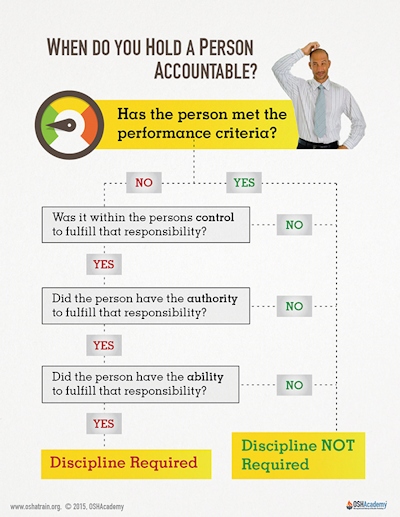Appropriate Accountability
A basic rule for developing accountability criteria for measurement is that an employee should be held accountable for a responsibility only if they have been given adequate:
- time,
- authority,
- resources, and
- ability to fulfill responsibilities.
If managers and employees are being measured and held accountable for results over which they have no control, they will attempt to somehow gain control over the results. The attempt to establish control may include inappropriate strategies.
For example, a supervisor who's measured only on department accident rates may threaten to fire anyone who completes an OSHA 301, Incident Report. Not only is that behavior counterproductive for the company, it is illegal!
OSHA assumes the employer ultimately controls all of the many operational variables such as raw materials, equipment, machinery, work schedules, personnel, and policies that make up the day-to-day work environment. Therefore, employer performance in providing resources and implementing policies, etc., should be measured.
On the other hand, employees may have very little control over operations in the workplace. However, they do have control over their own behavior: Employees have the ability to choose to work safe or to take chances.
In the workplace, managers should measure supervisor activities and behaviors, and it's important that supervisors measure their employees' safety behaviors. Employees can choose to comply with safety rules, and they may choose to report injuries and hazards in the workplace. Consequently, we need to measure these personal behaviors.
OSHA doesn't merely observe, they inspect, investigate, and issue citations that may include monetary penalties: Now that's measurement with consequences, isn't it?
OK, we've looked at Elements 1-3 of the accountability program. Now let's head over to Module 2 to check out Elements 4-6.
Knowledge Check Choose the best answer for the question.
1-9. Employees should be held accountable only if they have been _____.
You forgot to answer the question!

